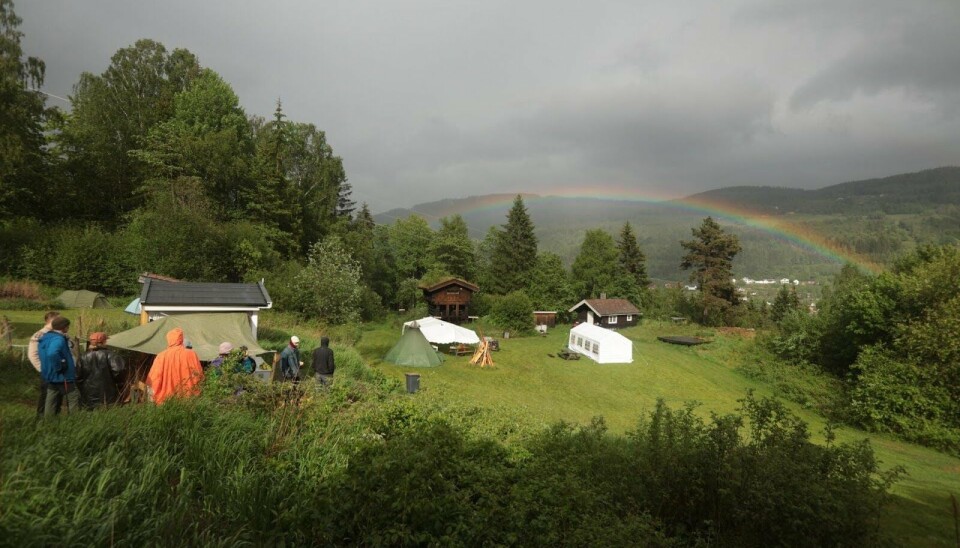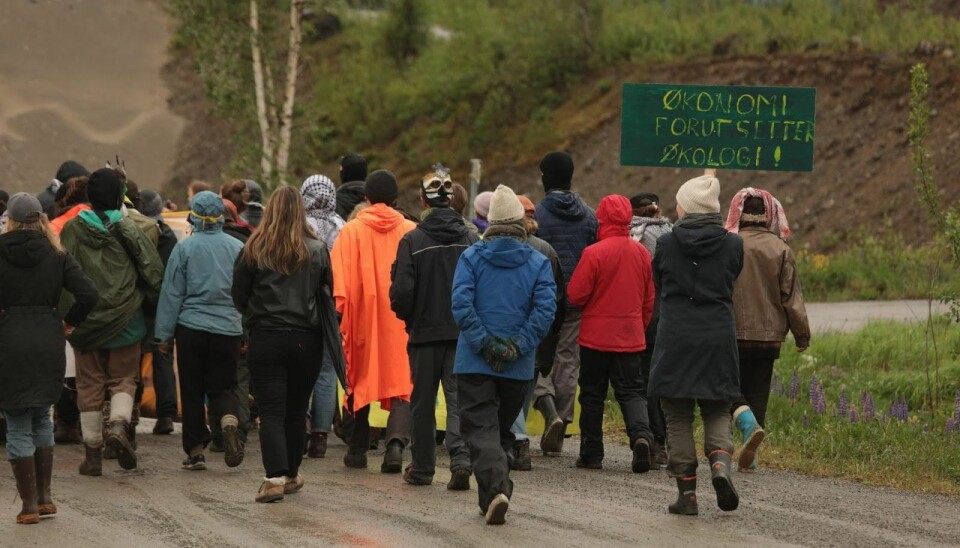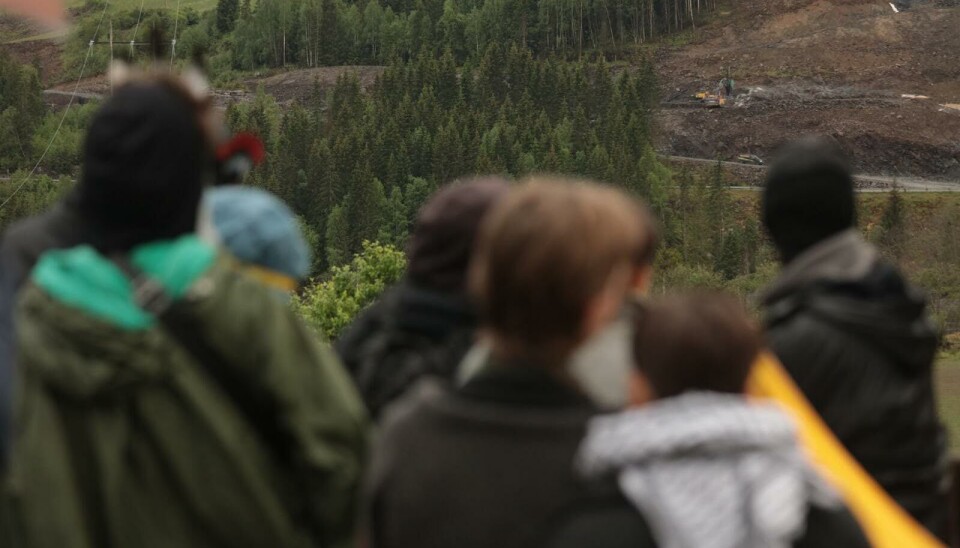
Hope in the Delta
In Lillehammer the construction of a 4-lane motorway is putting a natural reserve under threat. Activists from Norway and abroad come together to protect it.
In the heart of Norway, a nature reserve once seen as untouchable is under threat. Lågendeltaet, a protected wetland area near Lillehammer, is the proposed site of a four-lane motorway—an infrastructure project that has triggered a grassroots movement blending local resistance, international solidarity, and a new generation of civil disobedience. As bulldozers approach the Lågendeltaet, the stakes could not be higher. But to those who gathered at the edge of the reserve this May, it’s not just a protest, it’s a statement of intent, of solidarity, and of the world they want to build.
A Line Crossed
It’s a political choice that’s putting concrete before conservation.
– This isn’t just a local dispute, it’s the biggest environmental issue Lillehammer has seen in years, says Noah Christensen, a Lillehammer native and criminology student at the University of Oslo, and one of the organizers behind Lågendeltaets Venner (Friends of the Lågen Delta).
At the heart of the conflict is Lågendeltaet, a nationally protected wetland reserve and one of Norway’s most important stopovers for migratory birds.
– To get this motorway built, the government made a legal exemption that weakens protections for nature reserves. That sets a dangerous precedent, says Christensen.
The expansion of the E6 motorway will cut across the delta with a four-lane bridge, causing what the official environmental impact report describes as very serious negative consequences for the reserve’s ecosystems.
– We're talking about habitat loss, increased noise, and serious disturbance to birdlife and spawning grounds, Christensen says.
– This isn’t just bad planning. It’s a political choice that’s putting concrete before conservation.
A New Kind of Resistance

Protest culture in Norway has traditionally leaned toward quiet diplomacy, but that’s beginning to shift. Lågendeltaets Venner and Leve Lågen, two grassroot groups focused on environmental justice, ran a protest camp—or leir—from May 23–25, right next to the threatened reserve.
– Civil disobedience is not common in Norway, says Clara Le Glaunec, a 19-year-old exchange student from France studying social sciences at the University of Oslo.
– This kind of protest camp is still quite rare in Norway, but it’s creating a really exciting space. People are exploring new forms of activism and building on existing traditions in inspiring ways.
An International Student Bridging Struggles
Le Glaunec first learned about Lågendeltaet through her involvement with Extinction Rebellion Norway. The case struck a personal chord, reminding her of similar struggles back home.
– In France, I followed the fight against Route 69, a controversial motorway project between Castres and Toulouse. It was once declared illegal, but parts of it are now moving forward again. That’s why staying active matters. Resistance can work, but we have to keep showing up.
That hope, she says, is what pushed her to get involved.
– When someone explained what was happening, I just felt like I couldn’t ignore it. Participating gives me something tangible to do, it's a way to turn anger into hope. And the camp, despite the ecocide it's reacting to, has been a happy, community-building moment.
Le Glaunec will soon move back to France, but she plans to remain involved even after her exchange year ends, keeping in touch with Lågendeltaets Venner and seeking ways to connect the struggles in Norway and France.
This cross-border inspiration flows both ways: Christensen, who previously lived in France, says he was deeply influenced by the country’s rich protest culture.
– Being in France showed me what grassroots resistance can look like when people aren't afraid to take up space, he says.
– It made me realize what’s possible back home.
A Camp Bigger Than Just a Protest
It really felt like we were building more than just a protest.
The Lågendeltaet camp has turned into an experiment in community, creativity, and grassroots organizing, the protesters claim. Over three days, participants gathered for daily planning, meetings, shared meals, and spontaneous events that responded to weather and circumstance. With international attendees and an open atmosphere, the camp drew inspiration from French ZADs (Zones à Défendre, Zones to Defend) and other European protest movements.
– Bringing together different protest cultures made this something special. It broke some of the Norwegian shyness to protest, says Le Glaunec.
She recalls the strong sense of improvisation and connection:
– People cooked together, adapted when the rain disrupted plans, and read stories of resistance in the barn. It really felt like we were building more than just a protest, it was a real community.
Despite growing support, and a circulating petition, the movement however still faces serious hurdles.
– We don’t have major funding. We rely on volunteers and small donations. But we’re strong because we’re local, and because we care, says Christensen.
Both Le Glaunec and Christensen point to student engagement as a missing link.
– There aren’t many students involved right now, Le Glaunec admits. Christensen agrees:
– We need students. They have power, ideas, and energy. We want to show them they can make change. This is about more than one road, it’s about how Norway treats its nature.

A Local Struggle with Global Echoes
As the camp came to life, Christensen stood before the crowd and asked a simple question: “Who here is Norwegian?” Only a small handful raised their hands. The rest, more than half of those gathered, came from Finland, Sweden, Denmark, Germany, France, and beyond. For Le Glaunec, it was a powerful moment.
– It was incredible to see so many people from different countries come together for something so local, she says. It made the discussions rich. People brought different traditions, different protest experiences, according to her.
Christensen echoes the sentiment:
– The international support does not erase the local nature of the cause, but rather it reinforces it. Some places are worth defending, not because they are globally renowned, but because they matter deeply, whether to the birds who rest there, or to the people who chose to stand in the way of destruction, he says.































